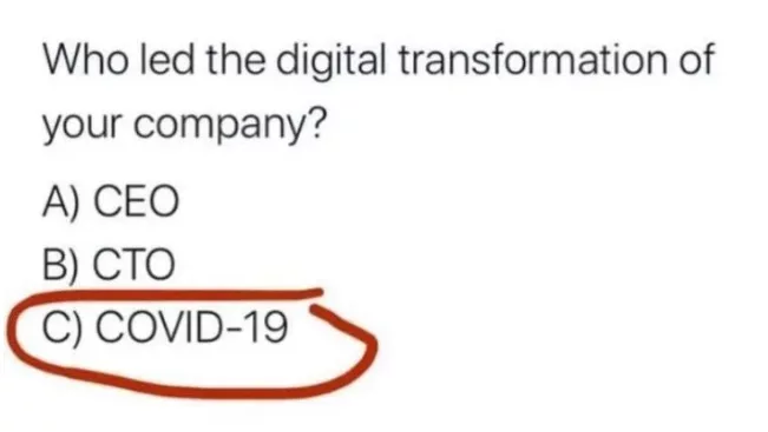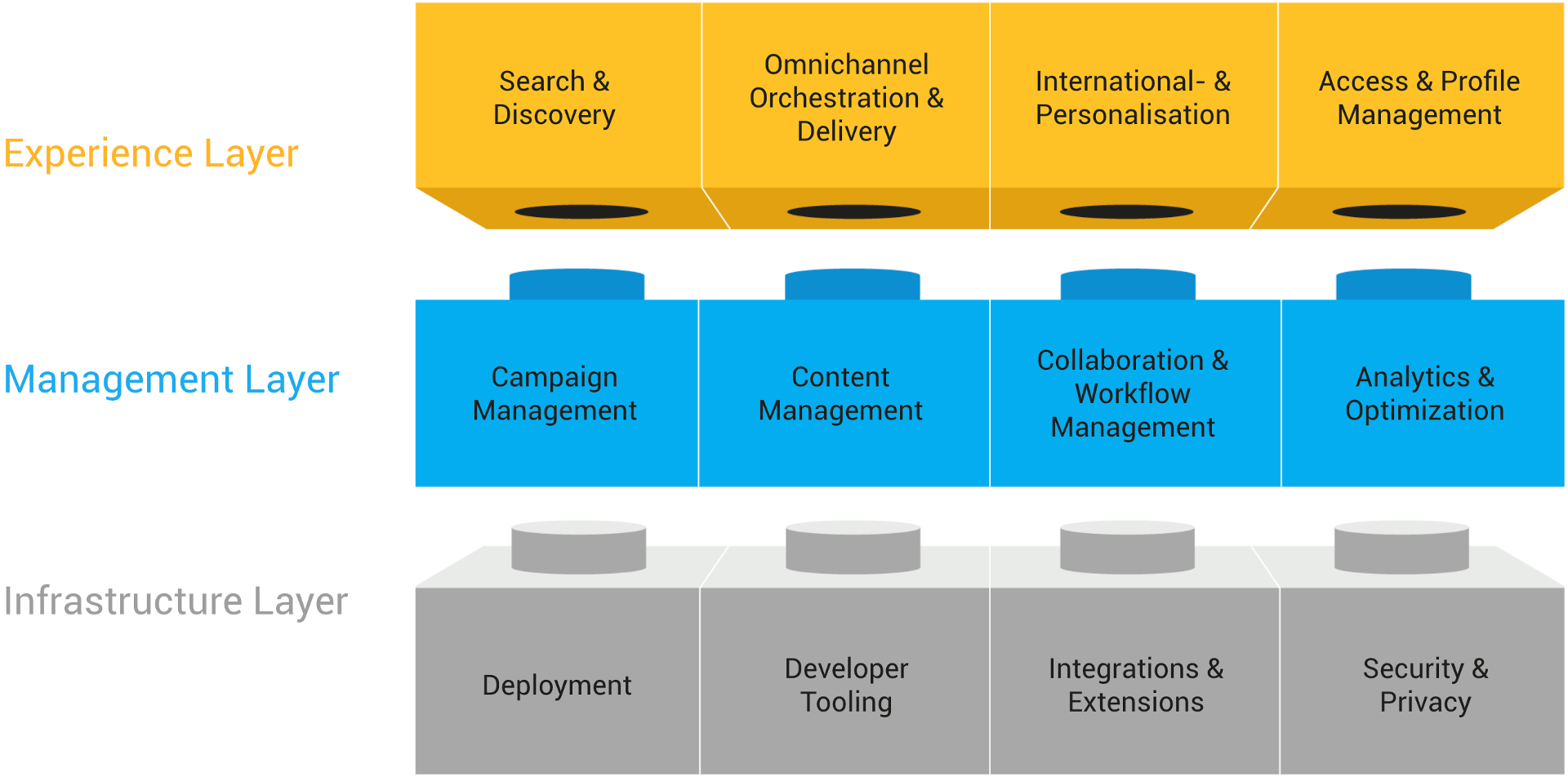- Aug. 2, 2024
- 6 min
From 0 to DXP: The Right CMS for Transforming Your Ecommerce Platform
Magnolia in Aktion
Unser Expertenteam zeigt Ihnen live, was Magnolia für Sie leisten kann.
Jetzt Demo buchenComposable DXPes help teams eliminate the limitations of legacy IT and enable agile and adaptable digital experiences. Their modular architecture and emphasis on best-of-breed technologies allow organizations to replace obsolete solutions with newer ones without disrupting the rest of the platform.
Headless CMS allows organizations to provide consistent, personalized experiences across all channels while giving marketers flexibility and enhancing content management efficiency.
Which CMS is the ideal core for your DXP and can meet all of your requirements? Read Magnolia’s white paper, “Finding the Right CMS for Ecommerce Re-Platforming“, and learn more.
The image below circulated online during the end of the COVID-19 pandemic and for a while after.

Although intended as a joke, it certainly has a ring of truth. McKinsey’s survey on “How COVID-19 has pushed companies over the technology tipping point—and transformed business forever” shows that the COVID-19 crisis has accelerated the digitization of customer interactions by several years. Consumers' rapid shift toward interacting with brands through digital channels (55% of customers' interactions were digital in 2020 versus 18% in 2017) forced companies to respond, and many of the changes remained for the long haul.
The objective here is to evolve the current ecommerce landscape into a digital experience platform (DXP) – a solution that can create high-grade, seamless customer experiences across all digital channels and touchpoints.
In contrast to digital-first startups, established companies must deal with legacy structures and IT systems, which generally slow down this transformation. This starts with analyzing current systems like the CMS and identifying how to shift toward cloud web content management.
The CMS sits at the heart of this transformation. Developing a DXP is only possible with a headless approach. But why is this the case and what benefits does this approach bring? And how can you find the right CMS to transform your ecommerce platform?
The 2-System Syndrome in the Field of Ecommerce
Ecommerce managers and marketers require solutions that they can use to create holistic customer experiences, combining content and ecommerce. However, most existing solutions are simply not built for this. But why not?
They suffer from the so-called 2-system syndrome: in other words, the online shop and the website have very little in common apart from using the same logo. They have different layouts and navigation, but they do not allow searches to be performed across both platforms. They also run on completely separate systems in the backend.
So, what are the consequences of this approach? These systems represent an absolute nightmare for marketers. For example, marketing campaigns can only be launched in the shop using complex workarounds. If this is possible at all, these often require two or three times the effort.
Composable DXP: The Ideal Means to Combat Legacy IT
The solution to these issues comes in the form of a composable DXP. This refers to a modular platform made up of various systems and technologies that work perfectly together – both technically and from the perspective of marketers.
Each module provides an important capability that is required for the ecommerce platform. When a solution or a technology is outdated and no longer fit for purpose, it can simply be swapped out without compromising the rest of the platform.
So what about legacy IT? Well, that simply disappears.
The Roadmap to a Composable DXP
How can you transform an entire, established ecommerce platform? Simply buying software that is labeled "DXP" is not enough.
So, what is the better approach to adopt? Firstly, gain a better understanding of what makes up a DXP. Analyze which capabilities you already have, which you need to update/replace, and which new ones you must add.
This table shows the capabilities that an ecommerce DXP requires:
Experience Layer
Search & Discovery
Omnichannel Orchestration & Delivery
Internationalization & Personalization
Access & Profile Management
Management Layer
Campaign Management
Content Management
Collaboration & Workflow Management
Analytics & Optimization
Infrastructure Layer
Deployment
Developer Tooling
Integrations & Extensions
Security & Privacy
After completing the analysis, you draw up a practicable roadmap for the transformation to a composable DXP, which comprises three phases:
Phase 1: Make your current systems and services accessible via APIs (standard interfaces).
Phase 2: Introduce headless systems to manage both content and products.
Phase 3: Gradually integrate all required capabilities into the DXP, such as analytics or personalization
What Is the Most Critical Step Here? The Introduction of Headless Systems
The two capabilities of content management and omnichannel orchestration & delivery (see graphic) represent the heart of a DXP. They allow marketers to create and manage customer experiences for all channels.
However, this requires replacing the legacy solutions with the CMS and the online shop with modern, headless solutions. You do not have your own front-end (no “head“). It all works like this:
In the headless CMS, your marketers manage copy, images, content layouts, and other marketing assets. The headless commerce system manages catalogs, product data, descriptions, article numbers, and prices, providing functionality such as the shopping basket and checkout. The frontends are developed separately. They collect all data from the various systems via APIs and deliver the customer experiences to devices.
Learn more about "What is headless ecommerce".
Finding the Right CMS for Ecommerce Re-Platforming
Learn how to overcome common challenges in ecommerce with a headless DX architecture, and use our checklist of the top-10 features when evaluating your next CMS for ecommerce.
Your Benefits With the Right Headless CMS
If you require more reasons to introduce a headless CMS, read on:
Flexibility
Developers can work with their preferred front-end technologies, leveraging modern approaches like Jamstack. You can combine the headless capabilities of your DXP with your ecommerce platform to introduce jamstack ecommerce. Thanks to the API-based architecture, the DXP is open to all technologies - including future technologies that do not exist yet.
Omnichannel Experiences
Developers and marketers have full control of the frontends. When using a DXP for ecommerce platforms you determine what the digital customer experiences look like in the various channels and are no longer held back by the limits of individual systems. Your marketers work in a single, seamlessly connected system from which they can control all channels.
Performance
Since the frontends operate independently of the backend systems, their performance can be optimized more effectively. This has a direct influence on conversion rates and SEO.
Making Marketing Independent from IT
Once the layouts and templates have been developed, marketers can create customer experiences in WYSIWYG mode, adapt them for various front-ends, and preview them. You do not require support from IT for this. Instead, your developers can focus their attention on refining the DXP.
Tight Integration of all Capabilities
The CMS and the ecommerce solution do not stand alone – a DXP requires many other capabilities, such as a CRM or analytics. You can connect all conceivable systems and services to a headless CMS, and your employees can use all the data without leaving the CMS user interface.
Detailed Guide on How to Select a Headless CMS for Your Composable DXP
Which CMS is the ideal core for your DXP and can meet all of your requirements?
Read the white paper “Finding the Right CMS for Ecommerce Re-Platforming“.
Alongside detailed information on the topic of headless systems, we have also included a checklist with ten considerations to take into account when selecting a new CMS.











